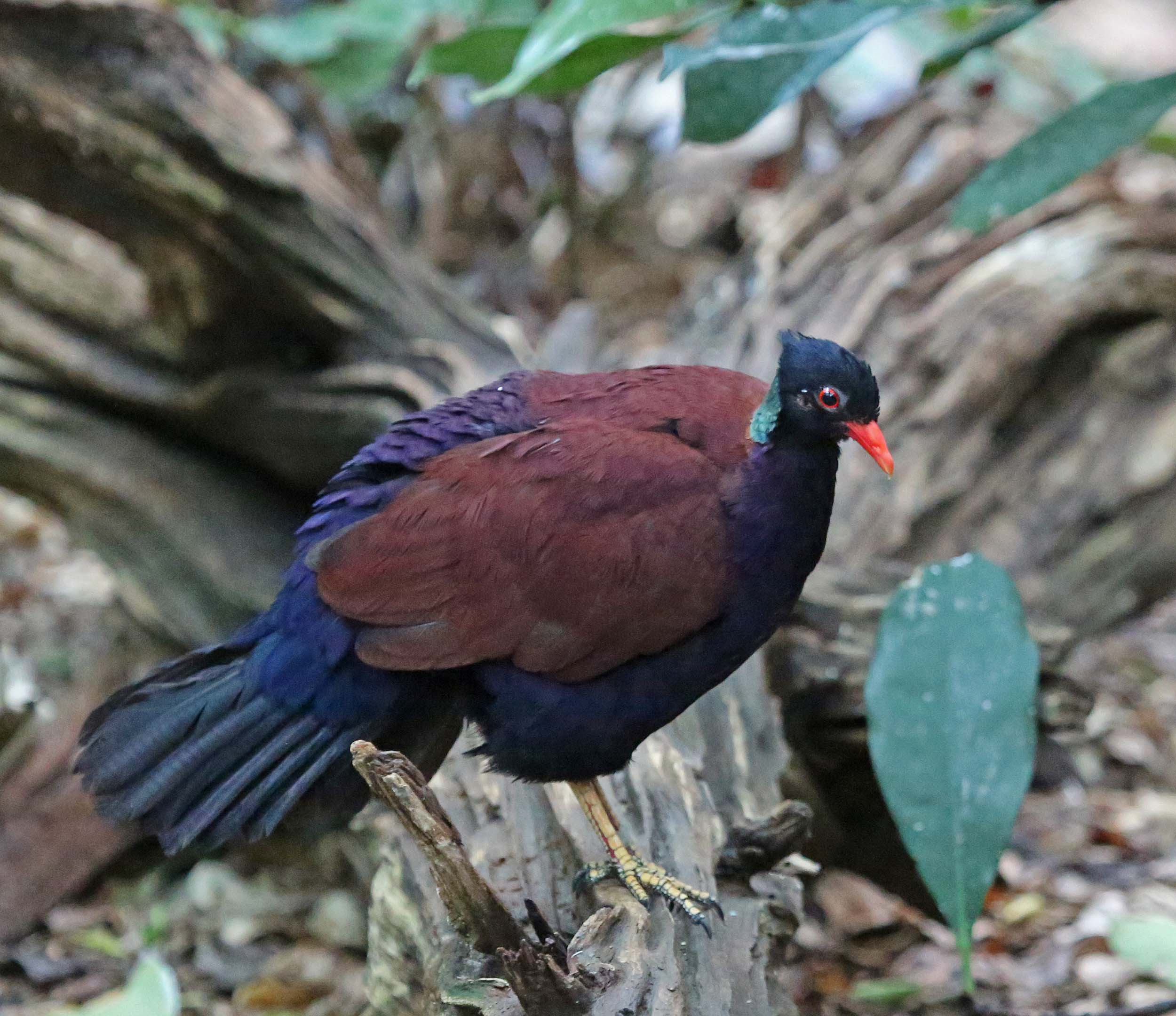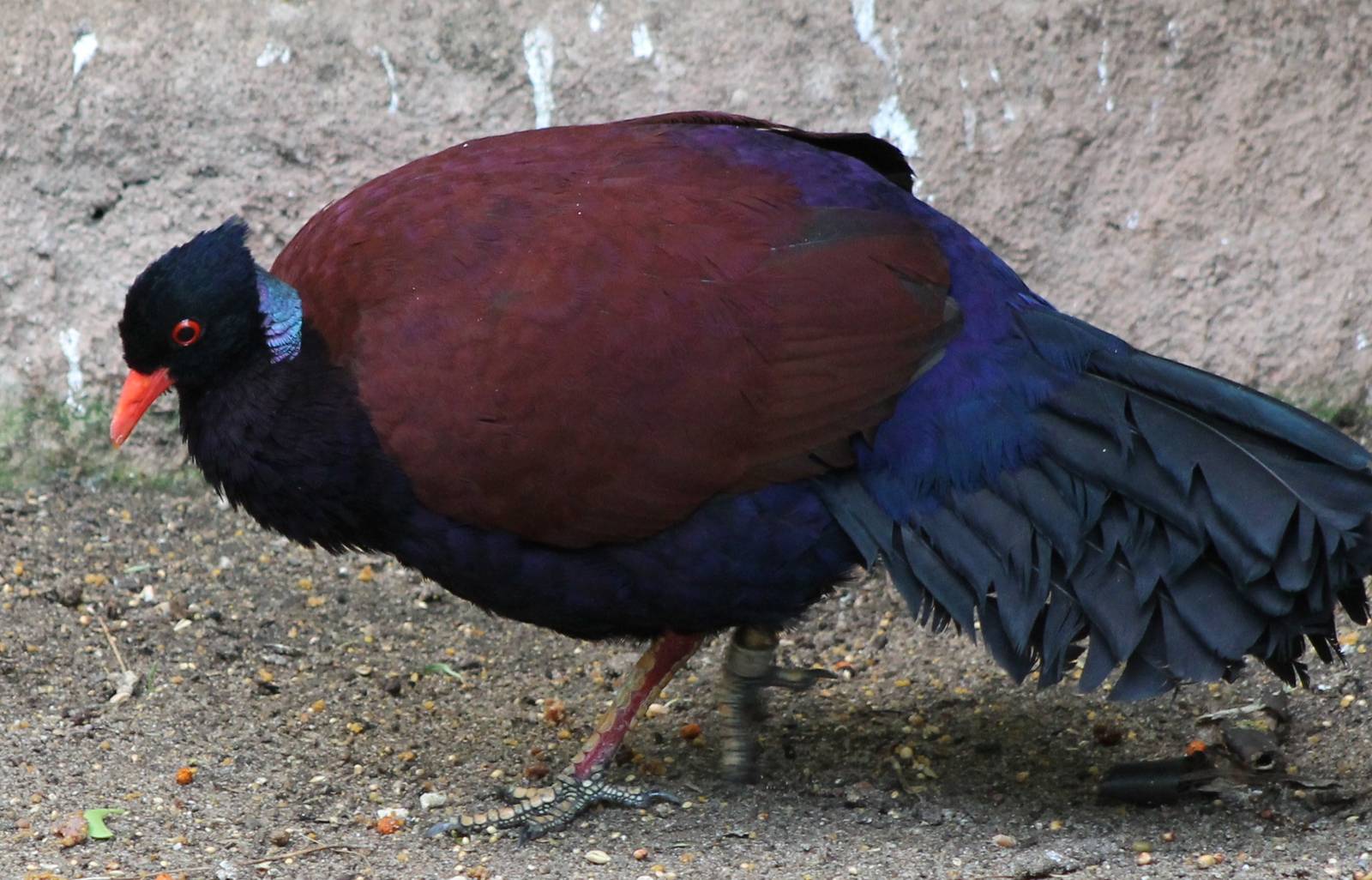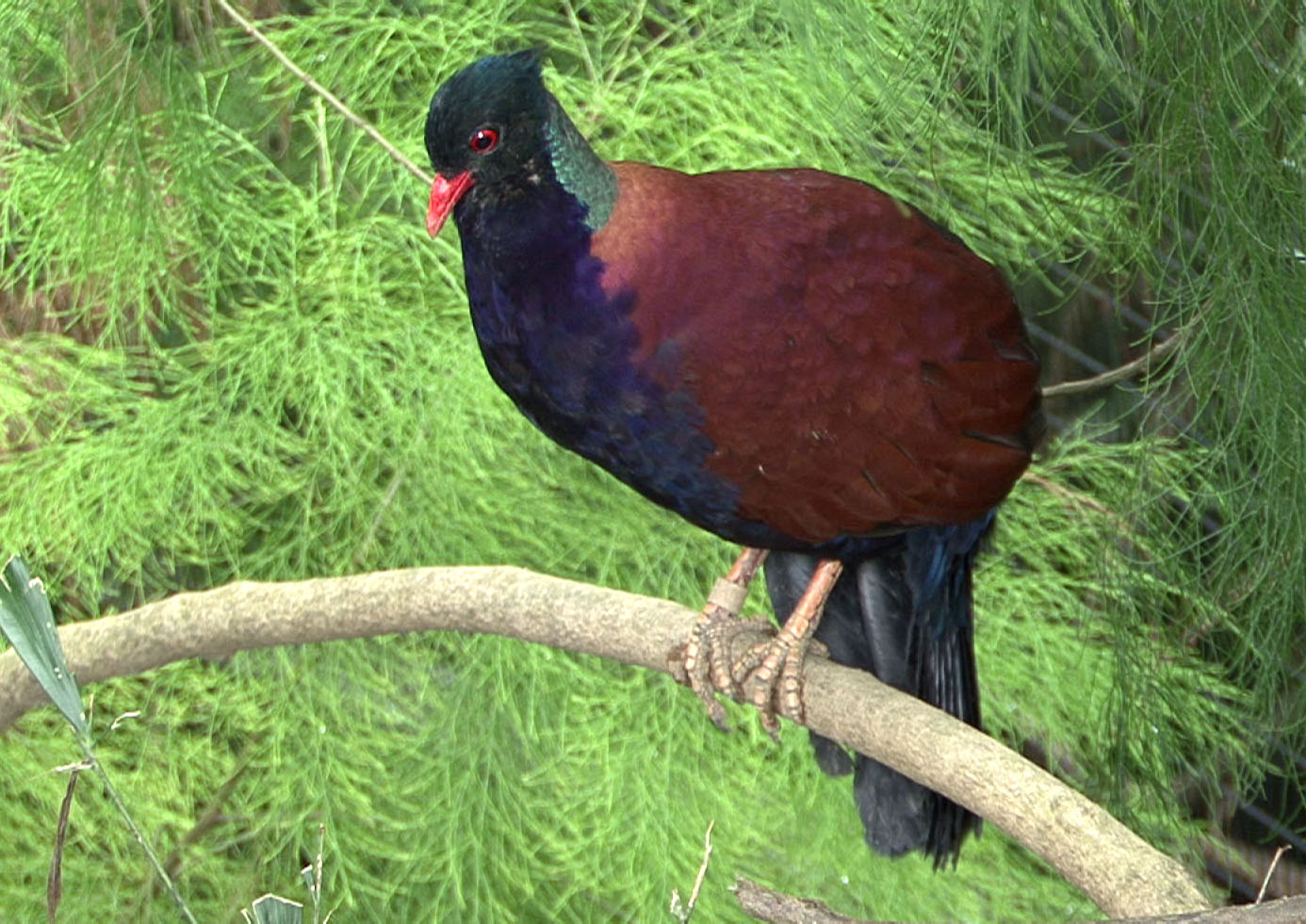
Otidiphaps nobilis
SUBFAMILY
Otidiphabinae
TAXONOMY
Otidiphaps nobilis Gould, 1870. Four subspecies.
OTHER COMMON NAMES
English: Green-collared pigeon, magnificent ground pigeon;
French: Otidiphaps noble; German: Fasantaube; Spanish:
Paloma Faisan.
PHYSICAL CHARACTERISTICS
17.7–19.7 in (45–50 cm); 1.1 lb (500 g). A clumsy pigeon with
long legs and a unique, laterally compressed pheasant-like tail
built by 20–22 tail feathers.
DISTRIBUTION
The hills of New Guinea and the neighboring islands of
Waigeeo, Batanta, Yapen, Aru, and Ferguson.
HABITAT
Rainforest and partly monsoon forest.
BEHAVIOR
The pheasant pigeon behaves like a gallinaceous bird and is
terrestrial. The male performs a display flight and the wingclap
is a loud crack like a gun shot.
FEEDING ECOLOGY AND DIET
Seeds and fallen fruit.
REPRODUCTIVE BIOLOGY
The nest is on the ground and forms a platform of a few sticks.
One egg is brooded for 28 days. In the first week of nestling
time, the male brings food to the female on the nest, and the
female passes it to the squab.
CONSERVATION STATUS
Not globally threatened. Subspecies Otidiphaps nobilis insularis
from Fergusson Island may be endangered. Deforestation negatively
affects this species.
SIGNIFICANCE TO HUMANS
None known.
Other popular Animals
Photo Gallery of - Pheasant pigeon




 Animalia Life
Animalia Life